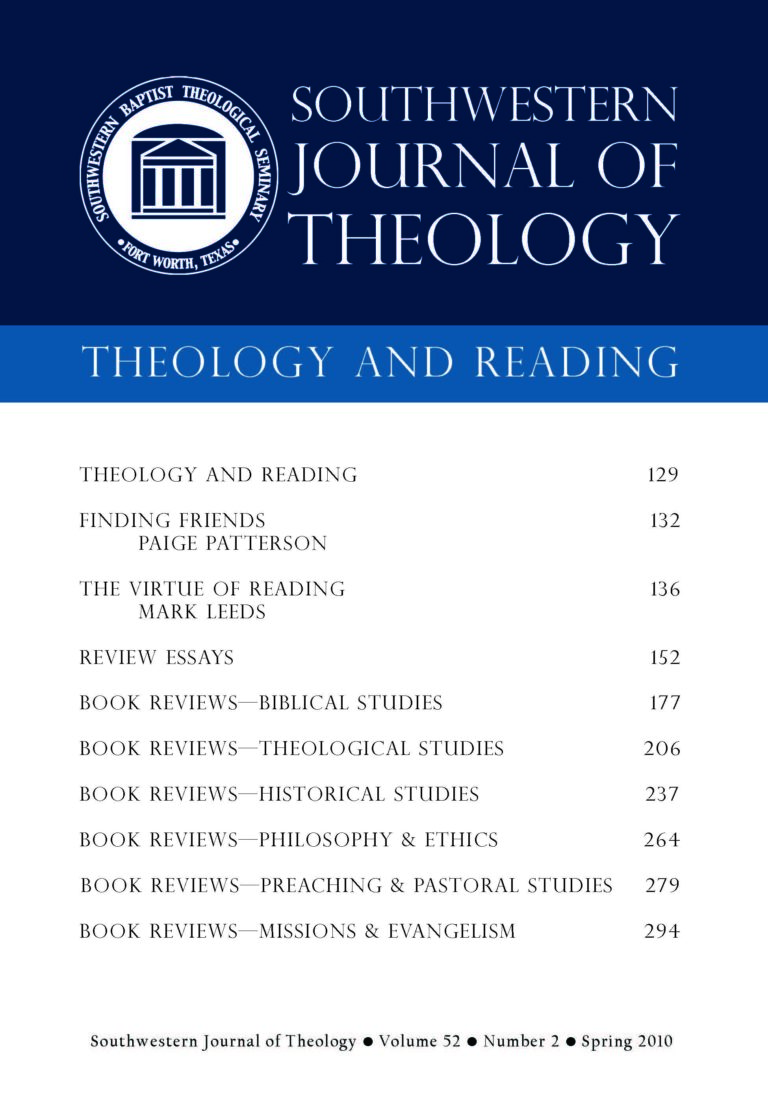
Theology and Reading
Southwestern Journal of Theology
Volume 52, No. 2 – Spring 2010
Managing Editor: Malcolm B. Yarnell III
Edited by Ben Quash and Michael Ward. Peabody, MA: Hendrickson, 2007. 148 pages. Softcover, $16.95.
In Heresies and How to Avoid Them: Why It Matters What Christians Believe, Ben Quash and Michael Ward have edited a volume that will serve well as a textbook for college or seminary courses in church history (especially those covering the patristic era), Christology, theological foundations, and biblical interpretation. Eight Anglicans, two Roman Catholics, a Quaker, and an Eastern Orthodox scholar wrote this collection of twelve essays. Ten of the writers earned research doctorates in the fields of theology, philosophy of religion, or archaeology. All of them have published in their field.
In the prologue, Quash explains that most of the chapters were originally written as sermons which were delivered at Peterhouse Chapel in Cambridge. The benefit of this for the reader is that complex theological debates are presented in an understandable manner. The downside is that the chapters are not supported by critical notes pointing readers to either primary or secondary sources. Although this is acknowledged by Quash (8), the situation could have been remedied prior to publication and this good book would have been made even better. Readers do benefit, though, from the inclusion of the English texts of the Apostles’ Creed, Nicene Creed, and the Chalcedonian Definition (10–12).
The first four chapters consider heresies surrounding the nature of Christ by exploring Arianism, Docetism, Nestorianism, and Eutychianism. The next two chapters explore the nature of the Son within intra-Trinitarian relationships by considering Adoptionism and Theopaschitism. Chapters seven through eleven provide the bulk of the material for the second section of the book, which considers other heresies within the church: Marcionism, Donatism, Pelagianism, Gnosticism, and Free Spirit. In chapter twelve, entitled “Biblical Trinitarianism,” Janet Martin Soskice does not provide a positive statement of this doctrine but an historical example of how not to defend orthodox doctrine. In this case, she documents the use of the spurious “Johannine Comma” in 1 John 5:7.
Each chapter is well structured. First, the writer provides a brief summary of the historical circumstances surrounding the theological error. Second, the key biblical texts are provided. Third, the writer explains why the heresy matters and offers suggestions for how to avoid the error. Although the particulars of each heresy differ, many of the suggestions for how to guard against them are raised repeatedly throughout the book. This happens for good reason. Whether one considers modern versions of Arianism or Marcionism, the counsel for guarding against them applies in every situation. Although Scripture is the Christian’s authority for establishing his doctrine and practice, it is important to consider that heretical teachers also use the Bible.
Michael Thompson points out the disturbing fact that Arius led Bible studies twice every week. Rather than attempting to guard against heresy by focusing only on the attentive study of the biblical texts, Thompson suggests that readers need “a real, personal encounter with the living Christ” and that they need to be active in a local group of believers (23). In his chapter on Nestorianism, A.N. Williams cites the need to focus not on how to avoid each heresy but how to “worship rightly” (35). The chapters on Arianism and Marcionism were especially well-written explanations of the historical circumstances surrounding the heresies. Quash’s chapter on Donatism provided a riveting narrative of this controversy, but he admits that this is a schism rather than a heretical movement (83). For that reason, one wonders if this chapter should have been included in the book. One correction that should be considered for any subsequent editions of this excellent historical-theological work is that John Sweet cites Jesus’ self-referent “Son of Man” as evidence for his humanity (28), but this phrase is widely regarded in biblical studies to be a Messianic title thus pointing to His divinity.
Although it might seem strange to give attention to heresies, this volume vividly illustrates the notion that responding to theological errors has served the church by prompting orthodoxy as the church has clarified its doctrine.





